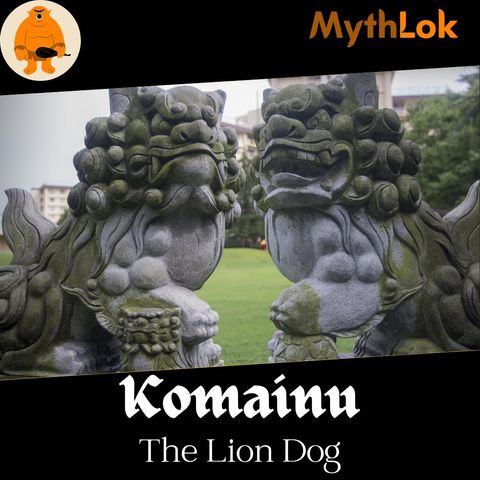Komainu : The Lion Dog
Oct 26, 2021 ·
9m 46s

Download and listen anywhere
Download your favorite episodes and enjoy them, wherever you are! Sign up or log in now to access offline listening.
Description
Komainu refer to the lion statues that are commonly found at the entrances of Japanese or Shinto temples. These statues are often called lion-dogs or sand komainu. They can be...
show more
Komainu refer to the lion statues that are commonly found at the entrances of Japanese or Shinto temples. These statues are often called lion-dogs or sand komainu. They can be found in both the outer and inner portions of Shinto shrines. The first type, born during the Edo period is called sandō komainu and the second and much older type is called jinnai komainu. They can also be found at private homes, Buddhist shrines and places associated with nobility. Modern komainu statues are almost identical, except for the mouths. In most cases, they have the same shape, though exceptions exist. Two forms are called a-gyo and un-gyo.
The name Komainu translates to Chinese guardian lions. They are believed to have been inspired by the images of Asiatic lions that were brought to China from India and the Middle East and especially from symbolism associated with Emperor Ashoka of India. The symbol of strength became a prominent feature of the animal after its transportation along the Silk Road.
There are many types of komainu, such as those with coins in their mouths or on their paws. In other places, they have bibs around them like statues of Jizo and Nagasaki. Komainu are often in pairs, with one male and one female. In the Heian Period these were called komainu and the hornless ones were called shishi, lions, though nowadays both are referred to as komainu.
During the Nara period, which is similar to the rest of Asia, two lions always accompanied each other. These pairs were only used indoors until the 14th century. During the Heian period, the two statues were different, and the former was called "shishi" because it had open mouth, while the latter was referred to as komainu or goguryeo dog. Probably the most common form of komainu that appears nowadays are the stone ones that are guarding the approach-ways of shrines.
There are definite differences in the styles of komainu found at major shrines and rural areas, as well as the artists who create these works. There are many styles that refer to regions in Japan, some of which are very distinctive and some of which are beginning to disappear. One particular style that is becoming less popular is the Izumo style where the lions are not sitting but depicted as crouching with their rear end up in the air. The Okazaki style is considered to be the standardised style now and common all over Japan.
Similar structures are seen all across Asia especially in China, Kores, Indonesia, Cambodia, Thailand and India.
Read about the Komainu at https://mythlok.com/komainu-the-lion-dog/
show less
The name Komainu translates to Chinese guardian lions. They are believed to have been inspired by the images of Asiatic lions that were brought to China from India and the Middle East and especially from symbolism associated with Emperor Ashoka of India. The symbol of strength became a prominent feature of the animal after its transportation along the Silk Road.
There are many types of komainu, such as those with coins in their mouths or on their paws. In other places, they have bibs around them like statues of Jizo and Nagasaki. Komainu are often in pairs, with one male and one female. In the Heian Period these were called komainu and the hornless ones were called shishi, lions, though nowadays both are referred to as komainu.
During the Nara period, which is similar to the rest of Asia, two lions always accompanied each other. These pairs were only used indoors until the 14th century. During the Heian period, the two statues were different, and the former was called "shishi" because it had open mouth, while the latter was referred to as komainu or goguryeo dog. Probably the most common form of komainu that appears nowadays are the stone ones that are guarding the approach-ways of shrines.
There are definite differences in the styles of komainu found at major shrines and rural areas, as well as the artists who create these works. There are many styles that refer to regions in Japan, some of which are very distinctive and some of which are beginning to disappear. One particular style that is becoming less popular is the Izumo style where the lions are not sitting but depicted as crouching with their rear end up in the air. The Okazaki style is considered to be the standardised style now and common all over Japan.
Similar structures are seen all across Asia especially in China, Kores, Indonesia, Cambodia, Thailand and India.
Read about the Komainu at https://mythlok.com/komainu-the-lion-dog/
Information
| Author | NITTEN NAIR |
| Organization | NITTEN NAIR |
| Website | - |
| Tags |
Copyright 2024 - Spreaker Inc. an iHeartMedia Company
